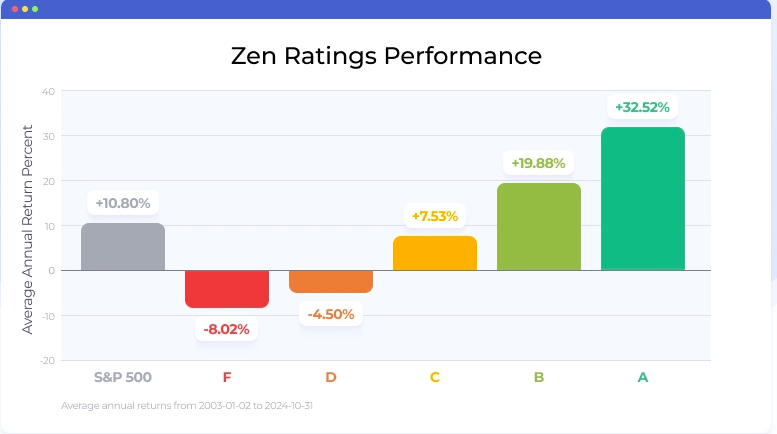Top 10 Suggestions For Considering Ai And Machine Learning Models On Ai Trading Platforms For Stocks
In order to ensure that you have precise, reliable, and practical insights, it’s essential to assess the AI and machine-learning (ML) models utilized by trading and prediction platforms. Models that have been poor-designed or exaggerated can result in inaccurate predictions as well as financial loss. Here are 10 of the most effective tips to help you evaluate the AI/ML model used by these platforms.
1. The model’s design and its purpose
Clarified objective: Determine the objective of the model whether it’s used for trading on short notice, investing in the long term, sentimental analysis, or a way to manage risk.
Algorithm transparency: Check if the platform discloses the types of algorithms used (e.g., regression, decision trees, neural networks, reinforcement learning).
Customizability: Determine if the model can be adapted to your specific trading strategy or your tolerance to risk.
2. Evaluate the Model Performance Metrics
Accuracy: Make sure to check the model’s prediction accuracy and don’t solely rely on this measure, since it could be misleading in financial markets.
Precision and recall. Test whether the model can accurately predict price fluctuations and minimizes false positives.
Risk-adjusted gains: Examine whether the forecasts of the model result in profitable transactions after accounting for risk.
3. Test the Model by Backtesting it
Performance historical: Test the model with previous data and check how it performs in the past market conditions.
Test the model on data that it hasn’t been trained on. This will help prevent overfitting.
Scenario analysis: Examine the performance of your model in different markets (e.g. bull markets, bear markets, high volatility).
4. Make sure you check for overfitting
Overfitting Signs: Look for models that do exceptionally well when they are trained, but not so when using untrained data.
Regularization techniques: Determine whether the platform is using techniques like L1/L2 regularization or dropout in order to prevent overfitting.
Cross-validation. Ensure the platform performs cross-validation to assess the model’s generalizability.
5. Assess Feature Engineering
Relevant Features: Check to see whether the model includes significant characteristics. (e.g. volume prices, price, technical indicators and sentiment data).
Feature selection: Ensure the system chooses characteristics that have statistical significance, and do not include irrelevant or redundant information.
Updates to dynamic features: Check whether the model is able to adapt to changes in characteristics or market conditions in the course of time.
6. Evaluate Model Explainability
Interpretation – Make sure the model provides explanations (e.g. value of SHAP and the importance of features) to support its claims.
Black-box platforms: Be wary of platforms that use excessively complex models (e.g. neural networks that are deep) without explanation tools.
User-friendly insights: Ensure that the platform offers actionable insights that are presented in a way that traders are able to comprehend.
7. Test the flexibility of your model
Market shifts: Determine whether your model is able to adjust to market shifts (e.g. new rules, economic shifts, or black-swan events).
Continuous learning: Make sure that the platform updates the model by adding new data to boost performance.
Feedback loops: Make sure the platform includes feedback from users as well as real-world results to help refine the model.
8. Be sure to look for Bias and Fairness
Data bias: Make sure that the data used in the training program are accurate and does not show bias (e.g. or a bias toward certain industries or periods of time).
Model bias – See if your platform actively monitors the biases and reduces them in the model predictions.
Fairness: Ensure the model does not disproportionately favor or disadvantage specific sectors, stocks or trading strategies.
9. Assess Computational Effectiveness
Speed: Test whether the model produces predictions in real-time and with a minimum latency.
Scalability: Check whether the platform has the capacity to handle large amounts of data that include multiple users without performance degradation.
Resource usage: Verify that the model has been optimized to make efficient utilization of computational resources (e.g. GPU/TPU use).
10. Transparency in Review and Accountability
Model documentation: Ensure the platform includes detailed documentation on the model’s design and its training process.
Third-party validation: Find out if the model was independently verified or audited by an outside entity.
Check if there are mechanisms in place to identify errors and failures of models.
Bonus Tips
User reviews and case studies Review feedback from users to get a better idea of the performance of the model in real world situations.
Trial period: Use the demo or trial for free to test the model and its predictions.
Support for customers – Make sure that the platform you choose to use is able to offer a solid support service in order to resolve problems related to model or technical issues.
Use these guidelines to evaluate AI and predictive models based on ML to ensure that they are accurate and transparent, as well as compatible with trading goals. View the best official statement on stock ai for website tips including ai for investing, AI stock, options ai, ai investing, ai for investment, best ai for trading, incite, best AI stock trading bot free, AI stock market, ai trading and more.
Top 10 Tips For Assessing Community And Social Features In Ai Stock Analysing Trading Platforms
Analyzing the community and social features of AI-driven stock prediction and trading platforms is vital for understanding how users communicate, share knowledge and learn from one another. These features can help improve the user’s experience as well providing valuable support. Here are 10 top strategies to help you analyze the community and social features of these platforms.
1. Active User Community
TIP: Find an online platform with an extensive user base that regularly participates in discussion, gives feedback and insights.
Why is that a community that is active is an indication of a community that allows users to grow and learn from one another.
2. Discussion Forums and Boards
You can determine the credibility of the quality of a message board by evaluating its activity levels.
Why: Forums enable users to discuss market trends or ask questions, and also discuss strategies.
3. Social Media Integration
Tips Check whether your platform is integrated with other social media channels like Twitter and LinkedIn for sharing updates and insights.
Why social media integration can increase engagement and provide current market updates in real time.
4. User-Generated Content
Search for features that permit users to share, create and modify content.
The reason: User-generated content promotes the spirit of collaboration and gives many perspectives.
5. Expert Contributions
Check to see if experts from the industry, like market analysts or AI experts, have contributed.
The reason is that expert perspectives provide credibility and depth to community discussions.
6. Chat in real time and messaging
TIP: Find out if users can talk to one another immediately using chat or real-time messaging.
Why: Real time interaction facilitates quick sharing of information and collaboration.
7. Community Moderation and Support
Tip: Assess the level of moderation and customer support in the community.
The reason: Moderation is essential to ensure a positive and friendly atmosphere. Helping users solve their problems as fast as they can.
8. Webinars and Events
Tips – Find out whether the platform allows live Q&A with experts, webinars, and other events.
The reason: These events provide a great opportunity to learn and meet directly with industry professionals.
9. User Reviews and Feedback
TIP: Look out for features that allow users to leave feedback about the platform as well as its community and features.
Why? The feedback of users helps to discover strengths and areas for improvement within the ecosystem.
10. Gamification and Rewards
Tips: Determine whether the platform includes gamification elements (e.g., leaderboards, badges) or incentives for participation.
Gamification can help users become more involved with the platform and its community.
Bonus Tip Tips for Privacy and Security
Check that all community and social features are backed by strong security and privacy measures to safeguard user data and interactions.
You can look at these factors to see if you are in a position to choose a trading platform that offers a supportive active community that can help you improve your trading skills and knowledge. See the most popular read this for AI stock investing for more examples including AI stock trader, best AI stock prediction, chart ai trading, stock predictor, AI stock price prediction, can ai predict stock market, AI stock analysis, AI stock analysis, can ai predict stock market, AI stock analysis and more.


